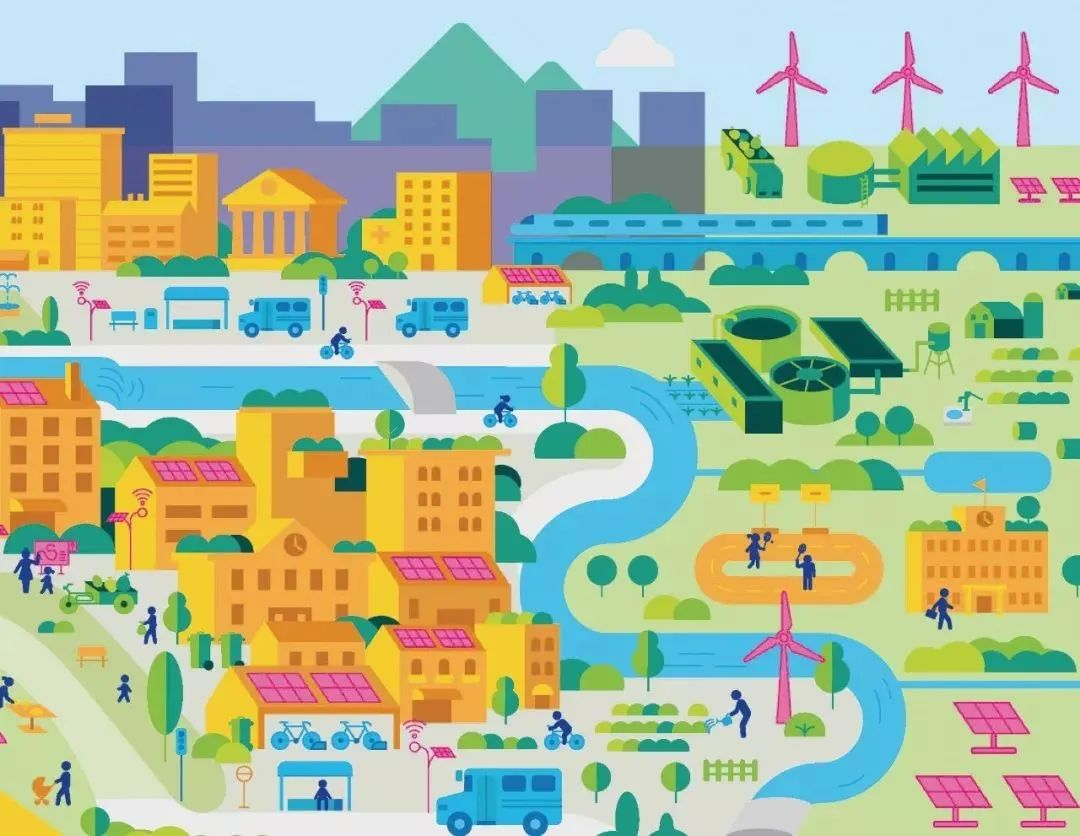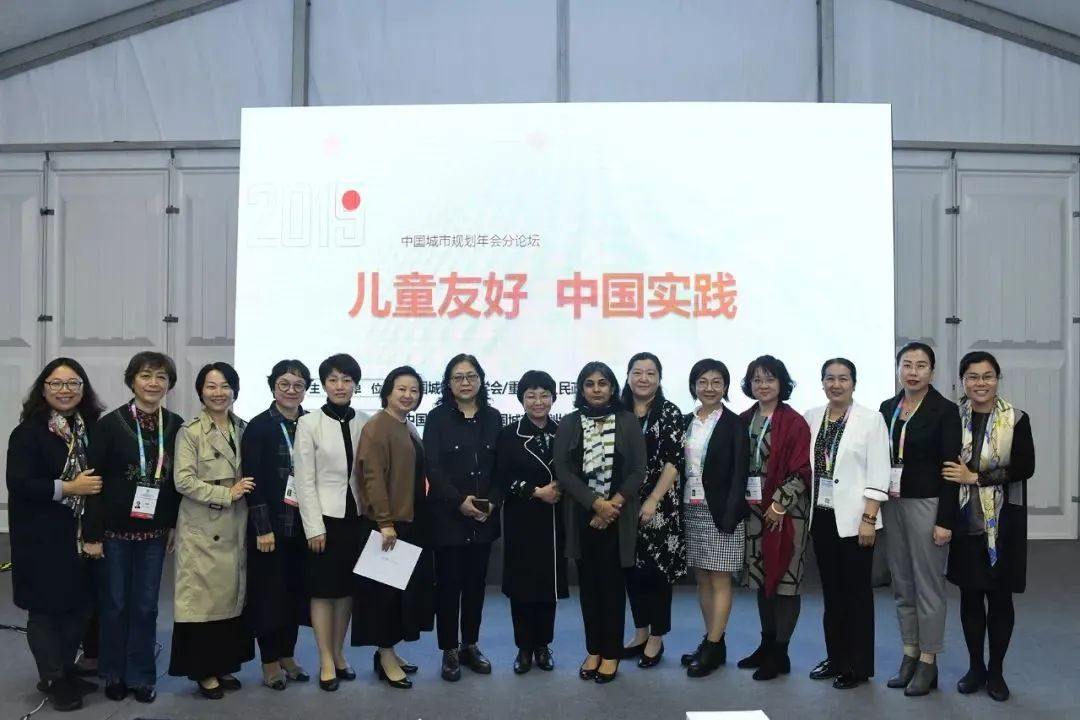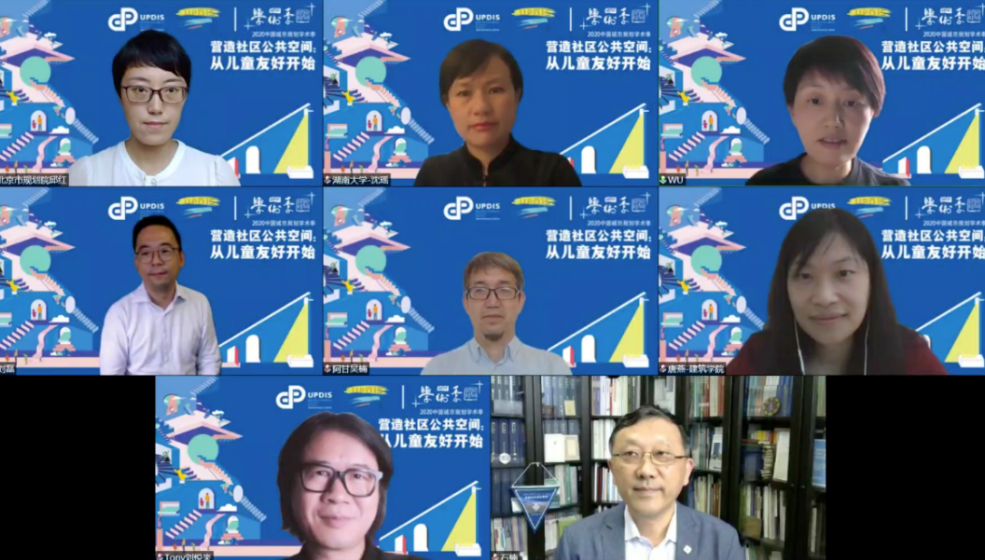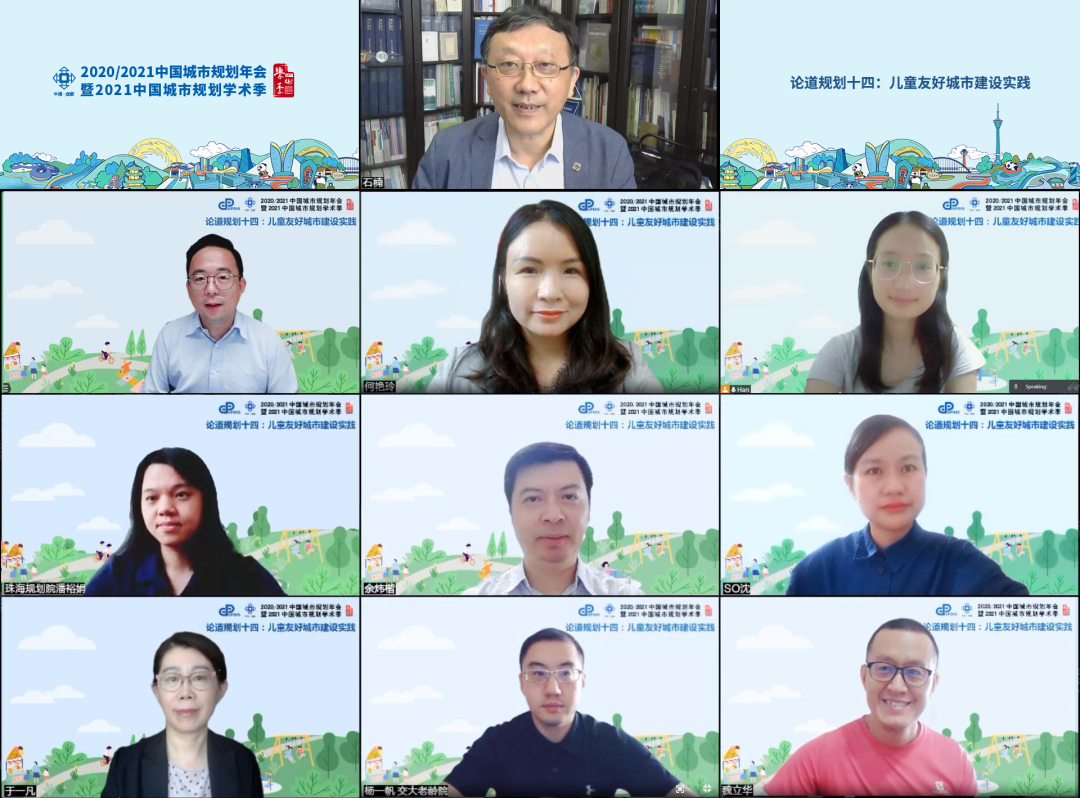


Introduction
When National Day of Science and Technology Workers coincides with Children's Day, UPSC launched a series of activities under the theme "Science and Technology Caring for the Next Generation" to comprehensively showcase the construction of child-friendly cities in China. This initiative aims to promote the efforts of the entire society in creating urban spaces that are conducive to the healthy and joyful growth of children.
To achieve sustainable development, a city must prioritize the sustainable development of its children. Constructing child-friendly cities and creating favorable conditions for the health growth of children, is not only the responsibility of cities to infuse fresh vitality into modernization, but also the mission of cities to nurture a new generation for national rejuvenation. Implementing child-friendly concepts in urban spaces, promoting the transformation and construction of child-friendly environments, and enhancing the quality and efficiency of urban spaces and services, are the undeniable responsibilities of urban planners.
UPSC and international organizations jointly released the Chinese version of "A Handbook on Child-Responsive Urban Planning", aiming to build great cities for Children.

In May 2018, UNICEF (United Nations Children's Fund) released the "Shaping Urbanization for Children—A Handbook on Child-Responsive Urban Planning", which provides detailed explanations on the concepts, principles, and technical strategies that urban planning should prioritize for children's needs. This handbook focuses on children and offers guidance on the key role that urban planning should play in achieving sustainable development. From a global to local perspective, the handbook emphasizes the creation of prosperous and equitable cities, where children can live in healthy, safe, inclusive, green, and thriving communities. All cities should commit to ten principles, including Investments, Housing and Land Tenure, Public Amenities, Public Spaces, Transportation Systems, Integrated Urban Water and Sanitation Management Systems, Food Systems, Waste Cycle systems, Energy Networks, Data and ICT Networks.

The UNICEF China Office Chief of Health, Anuradha Narayan (center), the Executive Vice-president and Secretary General of UPSC, Shi Nan (right), and the Deputy Director of Changsha Municipal Bureau of Natural Resources and Planning, Wang Huifang (left), jointly launched the Chinese version of "A Handbook on Child-Responsive Urban Planning".
UNICEF authorized UPSC to translate and produce the Chinese version of this handbook. UPSC released it on its official website and WeChat platform, in coordination with the official website of UNICEF. This initiative has promoted China's alignment with the global standards in child-friendly city construction.
This handbook aims to provide a reference for individuals involved in the planning, design, renovation, construction, and management of built environments. Each stakeholder has a responsibility to create a child-friendly urban environment: ensuring that children have a city childhood they deserve and empowering them to become the driving force of future cities.
UPSC established an academic exchange platform for "child-friendly cities" and organized a series of seminars.
Yang Baojun, the Chief Economist of the Housing and Urban Rural Development Bureau, National Master of Engineering Survey and Design, and the President of UPSC Council Board, stated that, "the Housing and Urban Rural Development Bureau has carried out four aspects of constructing child-friendly city. These include issuing standards and specifications, formulating the 'Guidelines for Constructing Child-Friendly Spaces in Cities (Trial)', providing guidance for promoting facilities construction in schools and children's activity areas, and organizing a series of academic seminars on child-friendly cities."
In March 2021, the construction of child-friendly cities was included in the national "14th Five-Year Plan". In the same year, 23 departments jointly issued the "Guidance on Promoting the Construction of Child-Friendly Cities". By the end of 2022, the Housing and Urban Rural Development Bureau and other departments jointly issued the "Guidelines for the Construction of Child-Friendly Spaces in Cities", ensuring that the idea of child-friendly should be in social policies, public services, rights protection, spaces for growth, and development environment.
In recent years, UPSC has organized a series of academic seminars and conferences related to child-friendly cities, promoting in-depth research on the theory of child-friendly cities. The 2018 National Planning Conference, themed "Building City Homes Hand in Hand with Child-Friendly Approaches," initiated a dialogue on urban construction and the concept of being "child-friendly." The 2019 National Planning Conference, in its sub-forum on "Child-Friendly Practices in China," focused on how Chinese cities can achieve child-friendly empowerment and showcase future values, offering practical solutions. The 2020 National Planning Conference, titled "Creating Community Public Spaces: Starting from Child-Friendly Approaches," concentrated on exploring how to provide space-friendly and service-friendly communities for children, and promote their healthy and happy development. The 2020/2021 National Planning Conference and the Academic Season of the National Planning in 2021, with the theme "Practices of Building Child-Friendly Cities," discussed the latest requirements of the country regarding child-friendly city, explored common challenges faced in the localization process, and identified possible policy innovations for the future. The aim was to provide reference and guidance for the construction of child-friendly cities across the country.

The sub-forum of the 2018 National Planning Conference: "Building City Homes Hand in Hand with Child-Friendly Approaches"
Photo of the guests (from left to right: Ruan Wentao, Mao Pan, Huo Yujia, Wang Lan, Wang Huifang, Wu Xiaoli, Zhou Weiyi, Liu Lei, Huang Wenfeng, Liu Kun, Wei Lihua)

The sub-forum of the 2019 National Planning Conference: "Child-Friendly Practices in China"

The sub-forum of the Academic Season of the 2020 National Planning Conference: "Creating Community Public Spaces: Starting from Child-Friendly Approaches"
Photo of the guests (from top to bottom, from left to right: Qiu Hong, Shen Yao, Wu Xiaoli, Liu Lei, Wu Nan, Tang Yan, Liu Yuelai, Shi Nan)

The sub-forum of the 2020/2021 National Planning Conference: "Practices of Building Child-Friendly Cities"
Photo of the guests (from top to bottom, from left to right: Shi Nan, Liu Lei, He Yanling, Yang Han, Pan Yujuan, Yu Weikai, Shen Yao, Yu Yifan, Yang Yifan, Wei Lihua)
Shi Nan, the Executive Vice-president and Secretary General of UPSC, pointed out that since the 2018 National Planning Conference, the discussion on child-friendly cities has been more year by year. The value of being child-friendly is steadily permeating into various fields and stages of planning and construction. A new social governance with the participation of multiple stakeholders is taking shape. UPSC will continue to provide a platform to promote building child-friendly cities.
Planners offer suggestions and ideas, aiming to build a child-friendly and happy city from "One-meter perspective".
Theories and practices both indicate that childhood is a crucial stage for physical and mental development of children. A positive experience in public spaces is essential for children's health in both physiological and psychological aspects. Wu Xiaoli, a member of the Sub-committee of UPSC and Chief Planner of Shenzhen Urban Planning and Design Research Institute, has proposed that factors such as the scale, spatial form, materials, natural environment, sunlight, and ventilation of public spaces can influence children's dynamic and perceptual behaviors physiologically. From the psychological aspect, the quality of public spaces can impact the development of children's values, emotions, creativity, and sense of belonging.
Therefore, Zhang Jing, a member of UPSC and the Deputy Chief Planner of China Academy of Urban Planning and Design, emphasizes that good planning and design of urban public spaces promotes the well-being of the next generation both physically and psychologically. Child-friendly spaces incorporates four principles: prioritizing children, offering diverse interests, ensuring safety and environmental friendliness, and providing comfort and convenience. It is necessary to further implement child-friendly concepts into the legal and regulatory framework, provide classification guidance for different places and spaces within the city, carry out targeted actions related to urban construction and renewal, and promote exemplary actions focused on the development of child-friendly cities through standard construction mechanisms, assessment, and certification mechanisms, as well as supervision and management mechanisms.
In specific urban planning and spatial design, how can we respect and be responsive to children? How can we transform spaces to be more child-friendly from the perspective of children's rights?
Wang Kai, vice-president of UPSC and president of the China Academy of Urban Planning and Design, pointed out that to promote child-friendly transformation of urban spaces, it is important to start from the micro-level and gradually extend to the macro-level, from close surroundings to further areas. It should revolve around the "living circle," taking into account the population structure of streets and communities, and promote age-appropriate and demand-based transformation of various spaces. Additionally, child participation can be encouraged to support the health growth of children in urban renewal practices, transitioning from child-friendly to age-friendly environments.
Qiu Hong, a professorate senior planner at the Beijing Urban Planning & Design Research Institute, indicated that planners should think from the perspectives of children. They should observe the behaviors and activities of children, listen to their thoughts, and understand their needs. By doing so, planners can provide better urban public spaces for children. "Children's opinions and suggestions can also provide new perspectives that are different from adults, which are inspirational that challenge our mind-set."
Liu Lei, Deputy Chief Planner at Urban Planning & Design Research Institute of Shenzhen, and Director of the Research Center for Child-Friendly Cities, believes that a key aspect of building a child-friendly city is the consensus on values and respect of children's nature. He believes that play and nature are crucial for children, and that children's play spaces should not be landscapes filled with colorful plastic structures. Instead, he advocates for natural and moderately adventurous play spaces.
Leng Hong, a board member of UPSC and a professor at the School of Architecture, Harbin Institute of Technology, pointed out that urban planning, as an important mean of promoting public health, is significant to carry out community governance for child health risk prevention. By analyzing the characteristics of child health risks at different age stages and their specific manifestations in community environmental factors, clarifying the participants and implementation paths of community governance, and proposing specific planning strategies from the perspectives of spatial refinement and service intelligence, it can provide theoretical support and guidance for promoting child health and advancing healthy community governance, thus improving the livability of urban environments.
In recent years, an increasing number of urban planners have actively explored the path of child-friendly cities in various work scenarios, such as community development and urban renewal. They have joined this warm and powerful cause.
Urban planners are driving the implementation of the "child-friendly city" concept to promote the healthy growth of children.
Currently, 54 cities have been selected as the first and second batches of national child-friendly cities. Cities across the country launched various practices to build child-friendly cities, promoting this concept into reality.
Changsha is a pioneer, trailblazer, and advocate of child-friendly cities in China. Building a child-friendly environment and creating a child-friendly city have always been the core values of Changsha's efforts. With dedication and commitment, Changsha strives to be the guider, guardian, and dream-builder for children. In 2012, Changsha included the concept of "hearing the voice of children in planning" in the revision and formulation of the "Layout Plan for Primary and Secondary Schools in the Central Urban Area of Changsha." In 2015, Changsha officially started the creation of a child-friendly city in China. With unwavering determination, Changsha has achieved remarkable accomplishments and produced a series of high-value practical outcomes, serving as a leader of the country.
The Shenzhen Municipal Party Committee and Government also attach great importance to child development. Since 2001, they have successively issued two ten-year plans for child development in Shenzhen. They have also released the first local action plan for building a child-friendly city in China, titled "Shenzhen Action Plan for Building a Child-Friendly City (2018-2020)," which has initiated pilot projects in six areas: community, hospitals, schools, libraries, parks, and transportation. They have also launched pilot projects for child-friendly streets and designated a number of child-friendly practice bases. In 2022, they published the first local standard for building child-friendly cities in the country, the "Guidelines for the Construction of Child-Friendly Public Service Systems," which includes eight subsystems: health, education, culture, sports, games, transportation, community, and family. These guidelines aim to provide children with warmer and more detailed services, enhance the precision of public service provision, and improve the precision of urban management.
Shanghai has gone through a process of increasing quantity and scale, systematic layout planning, and fine-grained design in its practice of urban public space. They particularly focus on the specific needs of the elderly and children, paying attention to detailed designs in many aspects. Shanghai has become a "model" city nationwide in terms of shaping urban public spaces.
In 2022, Chongqing officially issued the "Implementation Plan for Building Child-Friendly Cities in Chongqing," which puts forward five aspects: social policy friendliness, public service friendliness, rights protection friendliness, growth space friendliness, and development environment friendliness. The plan clearly outlines the goal of building a child-friendly city.
Hangzhou, Zhejiang Province, has released the "10 Child-Friendly Initiatives in Hangzhou for 2022," aiming to provide suitable conditions, environments, and services for children's growth and support the construction of a child-friendly city in Hangzhou. Among them, Hangzhou proposes to promote the construction of child-friendly parks. In 2022, all newly built parks in the Hangzhou area will be equipped with child-friendly facilities, with at least 20 parks planned for construction. Additionally, there will be at least 5 new child-friendly facilities implemented on the Qiantang River green belt, aiming to promote the child-friendly transformation.
In March 2023, the first local regulation on child-friendly city construction in China, titled "Promotion Regulations of the Child-Friendly Cities Construction in Heze City," was officially implemented. The regulations emphasize the promotion of child-friendly city construction within the administrative region of Heze City through initiatives such as launching pilot projects, creating conducive atmosphere, clarifying departmental responsibilities, and promoting child-friendly initiatives in rural areas. The introduction of these regulations aims to effectively address various shortcomings that hinder children's development in the city, promoting the idea of prioritizing children to the public. It seeks to consolidate and expand the achievements of building a child-friendly city in Heze, promote the construction of child-friendly cities, drive high-quality urban development, protect the physical and mental health of children, and safeguard their legal rights and interests.
Source: <https://mp.weixin.qq.com/s/rxtHSEUbYkvduk67g5uPCw>
Translated by He Huiling